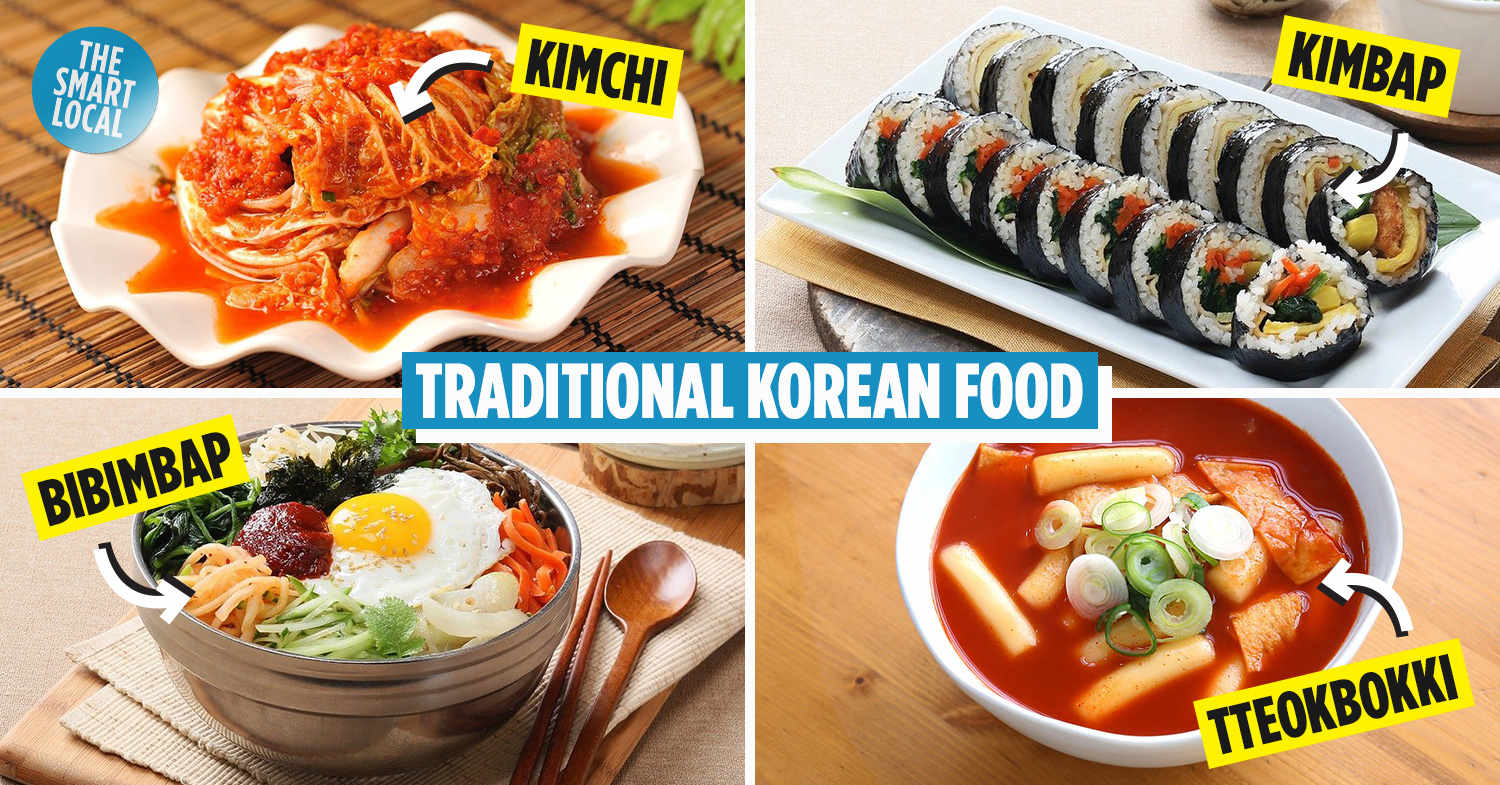Traditional Korean food origins
Food plays a defining role in Korean culture. Asking someone if they’ve eaten is a way of showing care, and sharing a meal together is seen as a way to get to know one another. Riding on the Hallyu wave, Korean food has gained recognition worldwide. Let’s dig into the stories behind these 12 traditional Korean food dishes and how they have changed over time.
1. Kimchi 김치
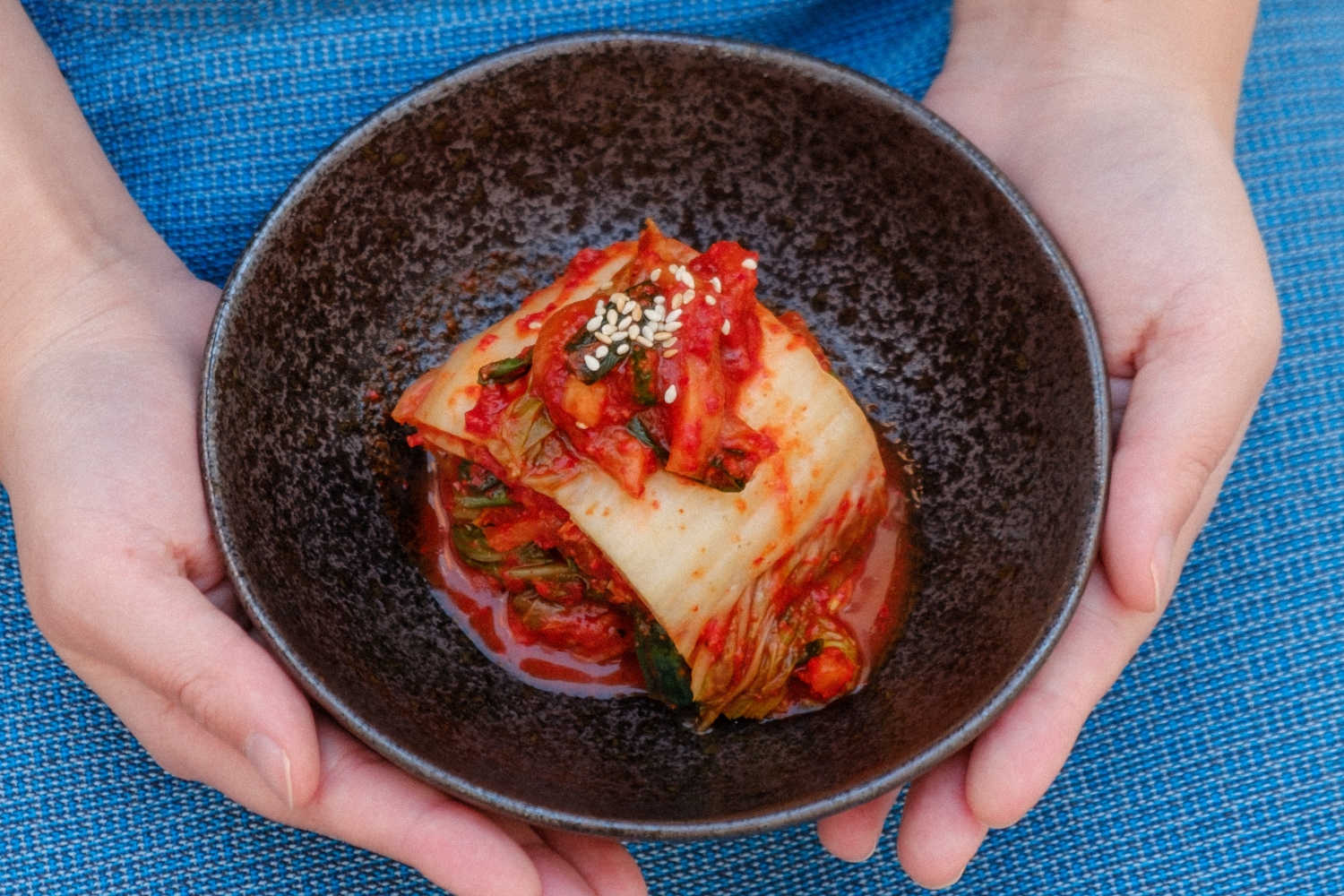
Image adapted from: Portuguese Gravity
The quintessential side dish of K-cuisine – kimchi. Kimchi is a versatile ingredient that is used in well-loved dishes such as kimchi stew and kimchi pancakes. Made by fermenting cabbages with garlic, hot pepper flakes, and sugar, kimchi hits all the sweet, sour and spicy notes at once.
Kimchi is a staple in Korean households. There are even refrigerators specially designed to store kimchi and facilitate the fermentation process. These refrigerators are considered an essential appliance in many households.
Kimchi’s origin dates back to 37 BC, when the Goguryeo Kingdom was known for their preserved and fermented food. Fermenting vegetables became more common as Koreans picked up a vegetarian lifestyle that came with the spread of Buddhism during the Silla Dynasty.
You may be surprised to learn that kimchi wasn’t always spicy. It first started out as plain pickled vegetables, but later got its iconic red colour and spicy kick after chilli peppers were introduced from the Americas.
The traditional process of making kimchi for the winter, known as kimjang (김장), usually takes place in late autumn. As fresh vegetables were scarce during the harsh winter, kimchi was usually prepared in large quantities to last families throughout the cold season.
Traditionally, households would come together to prepare kimchi as kimjang is a labour-intensive process. Kimjang was seen as an opportunity for family bonding and to promote a culture of camaraderie among neighbours.
Today, the convenience of ready-made kimchi has made kimjang a dying art. While the younger generation prefers buying ready-made kimchi, the older generation sees making and sending kimchi to their adult children as a way to express their affection.
2. Tteokguk 떡국 (Rice cake soup)
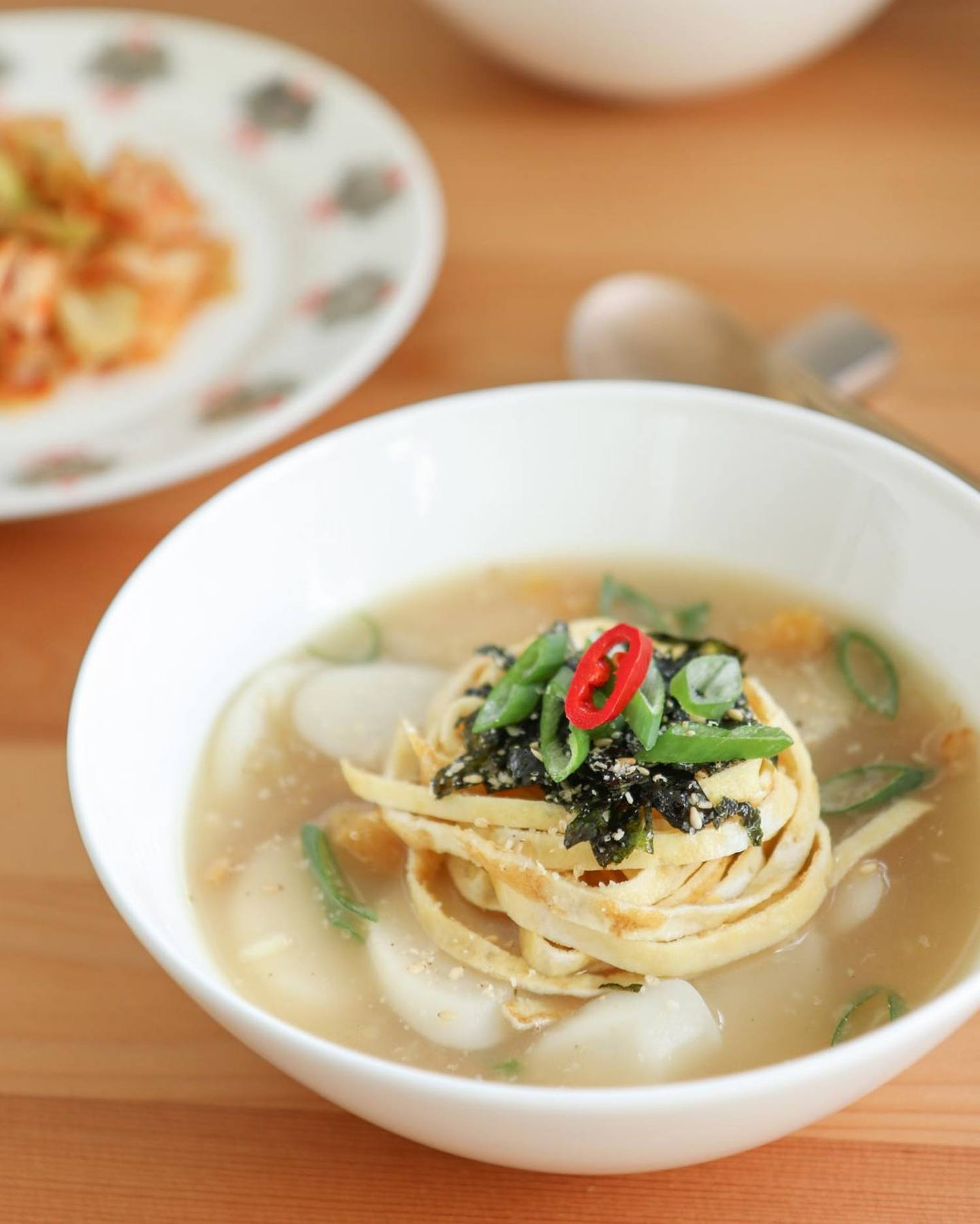
Image adapted from: @mutationdeer_jiyeon
A dish eaten on New Year’s Day, tteokguk was first mentioned in Dongguksesigi, a 19th-century book on Korean traditional customs. Tteokguk is usually made with sliced rice cakes and beef broth. Tteokguk was said to be prepared during ancestral rites on the first morning of Lunar New Year and eaten in replacement of rice.
The tradition of preparing tteokguk every Lunar New Year continues till today. As the Korean pronunciation of “rice” (ssal, 쌀) is similar to “age” (sal, 살), having tteokguk on New Year’s Day can be interpreted literally as “eating a year in age”.
Koreans often ask, “How many bowls of tteokguk have you eaten?” as a playful way of asking one’s age. While children would eat more tteokguk, wishing to grow up faster, older people will try to stop time by avoiding the dish.
Eating tteokguk also heralds good fortune in the upcoming year. Rice cakes are often sliced into thin oval shapes, resembling old Korean coins known as yeopjeon (엽전). Moreover, the whiteness of the rice cake also represents purity and cleanliness, signifying a fresh start for the new year.
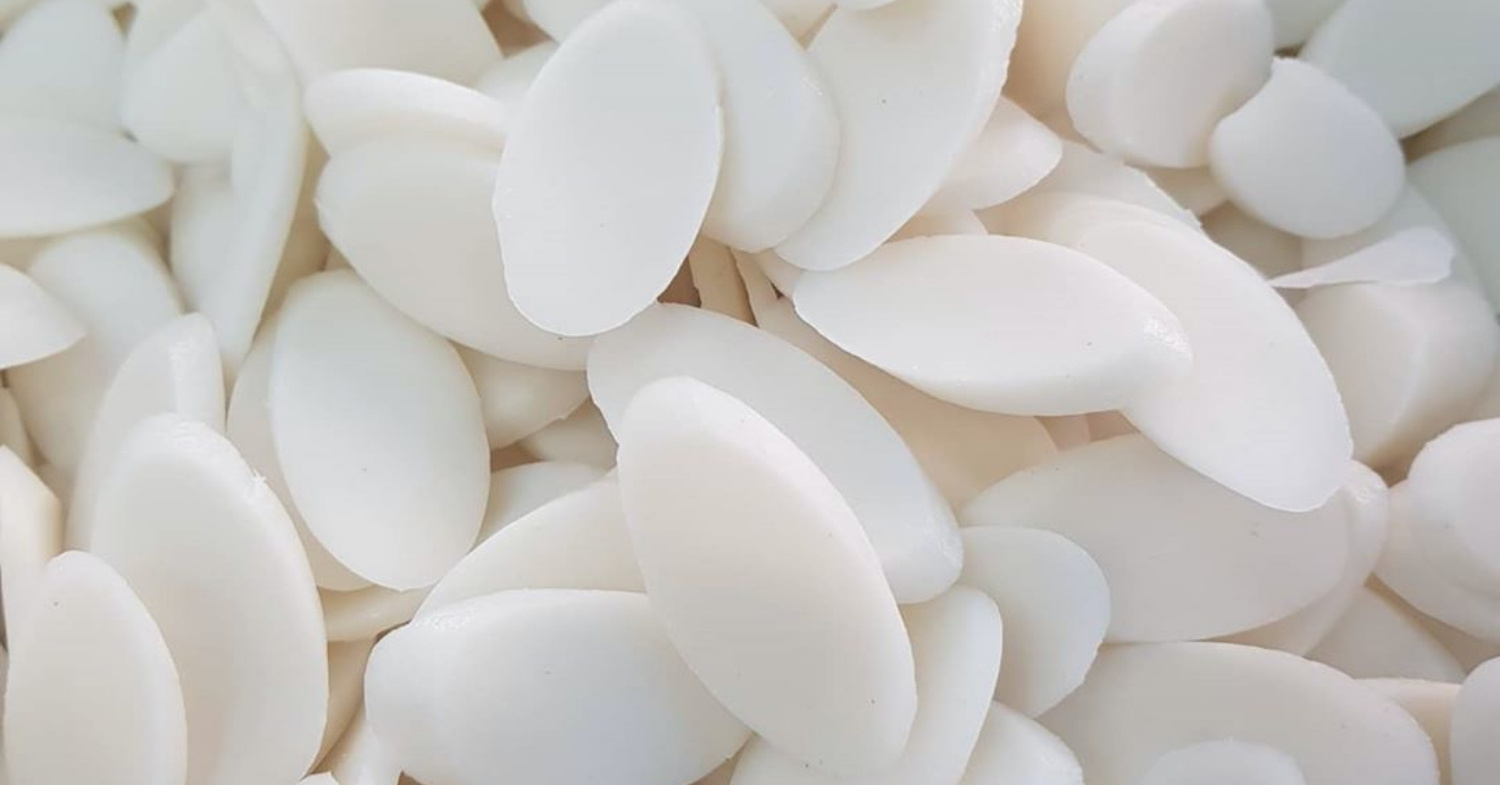
Sliced rice cakes
Image adapted from: @eejrwoddl
3. Manduguk 만두국 (Dumpling soup)
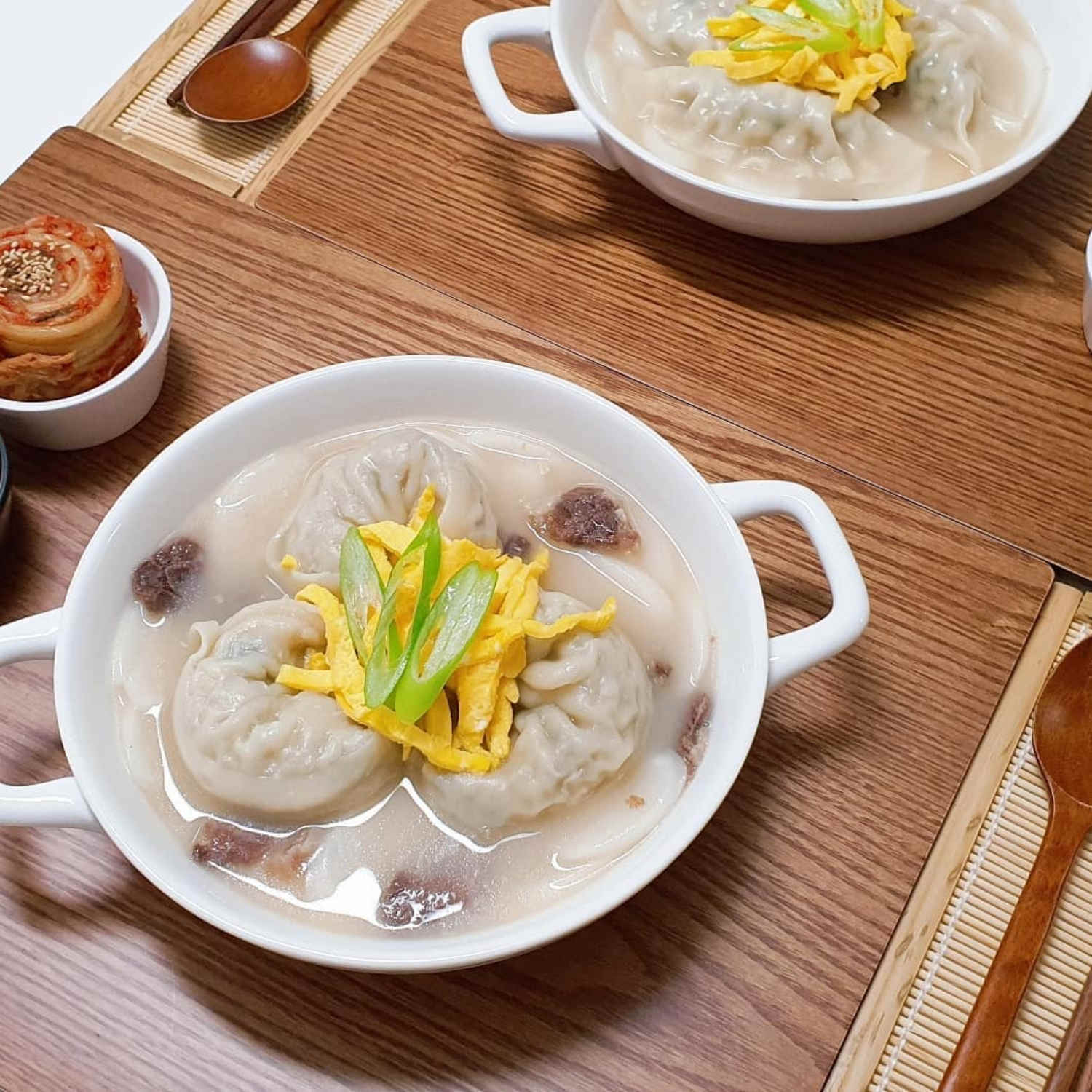
Image credit: @ssol.or
Another dish commonly eaten on New Year’s, manduguk symbolises good fortune. Manduguk is a type of dumpling soup usually made with beef broth. Koreans believed that eating manduguk meant that they would have all of the good fortune wrapped in the dumplings.
It is believed that while eating tteokguk on New Year’s Day is customary in South Korea, North Koreans eat manduguk instead. Today, it is common to add dumplings into tteokguk so that one can enjoy both longevity and prosperity in a bowl.
The origins of dumplings can be traced back to the Goryeo Dynasty (918-1392). There is a famous folk song called Ssanghwajeom (쌍화점), which details how the first dumpling shop in Korea was opened by a group of Uyghurs.
4. Jjajangmyeon 짜장면 (Black bean sauce noodles)
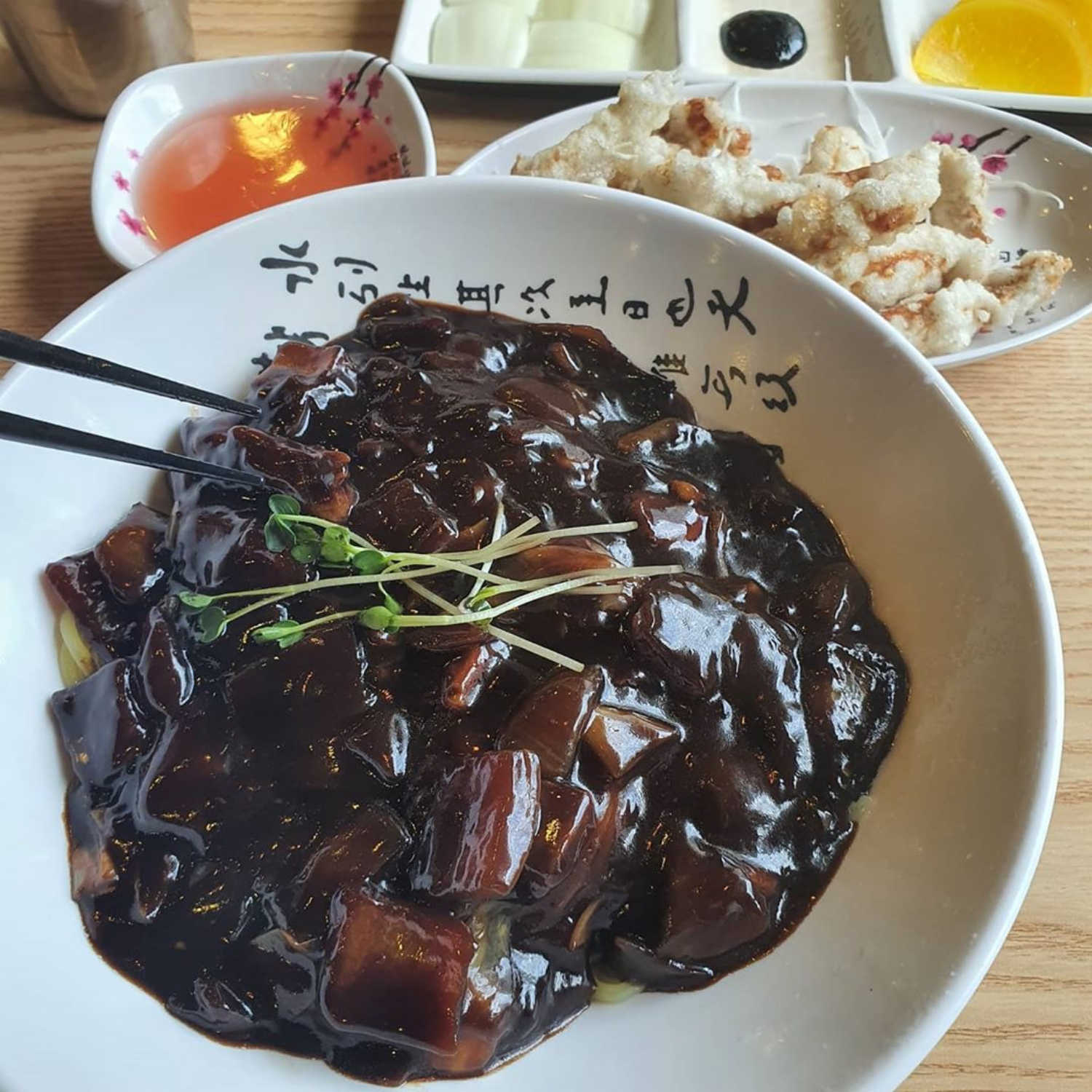
Image credit: @hunseokkun
Jjajangmyeon was first introduced to Korea around 1883 as zha jiang mian (炸酱面), by Chinese immigrants who wanted a taste of home.
It was popular with Chinese labourers as the noodles were topped with a thick black bean gravy, rather than soup, which meant that there was a lower chance of spillage.
Eventually, Koreans tweaked the dish to suit their palate, and the jjajangmyeon you see today was born.

Image credit: @v.oo.v247_
Jjajangmyeon is usually enjoyed with sweet and sour pork (tangsuyuk, 탕수육) and spicy seafood noodles (jjamppong 짬뽕).
Koreans have a tradition of ordering these when they move into their new homes. The practice started when food delivery options were mostly limited to Chinese restaurants. As kitchens in their new homes were not ready for use yet, ordering in jjajangmyeon became common practice.
Jjajangmyeon is also the representative dish for all single people. On April 14, also known as “Black Day”, singles eat jjajangmyeon together to comfort each other.
Jjajangmyeon (짜장면) is also spelt as jajangmyeon (자장면) – the spelling of this dish has been heavily contested in Korea. In 1986, the Korean Language Research Institute officially recognised “jajangmyeon” as the standard version.
However, as jjajangmyeon has been widely used since the 1950s, it was hard to adapt to the new change. Eventually, in 2011, the National Institute of Korean Language accepted jjajangmyeon as an alternative spelling.
5. Tteokbokki 떡볶이 (Stir-fried rice cakes)
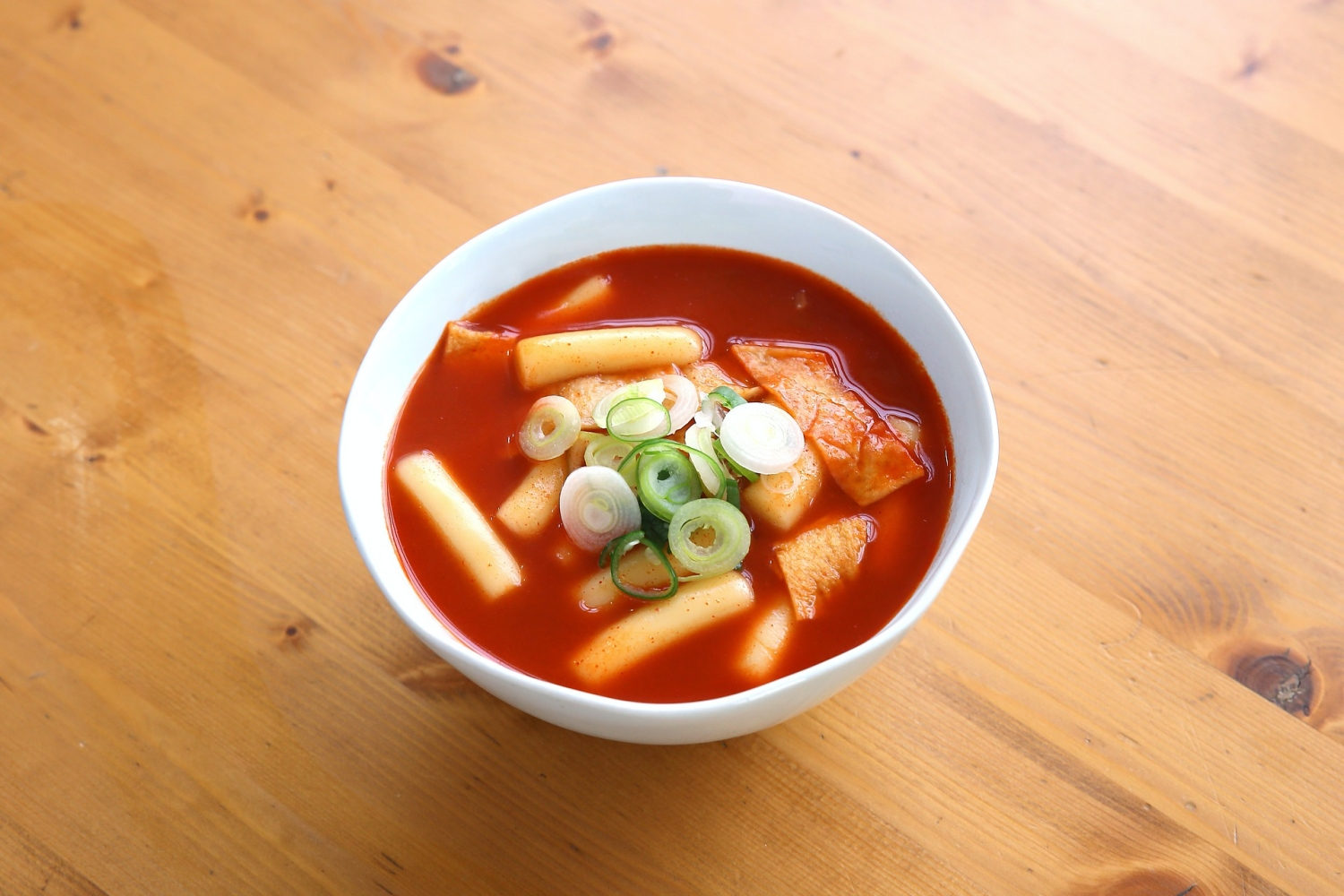
Image credit: jelly
Voted the best COVID-19 pandemic comfort food, tteokbokki is a must-try Korean snack. It wasn’t always spicy – the first record of tteokbokki described it as a soy sauce-based dish served exclusively in the royal palace.
That was how it got its first name, goongjung-tteokbokki (궁중떡볶이), which translates to “palace stir-fried rice cakes”. It could only be afforded by nobles as the main ingredient, flour, was rare back then.
After the Korean War, large quantities of flour were imported to Korea from America to aid the people. Koreans then used the imported flour to make tteokbokki.
There are many types of tteokbokki, with the most common being the spicy tteokbokki made with a gochujang-based sauce. In 1953, a restaurant called “Ma Bok Rim” started selling rice cakes seasoned with red pepper paste. It got popular among Koreans and paved the way for more stalls to sell their own version of tteokbokki.
Tteokbokki is such a popular snack that instant versions of it are sold in convenience stores and supermarkets.
6. Kimbap 김밥 (Rice roll)
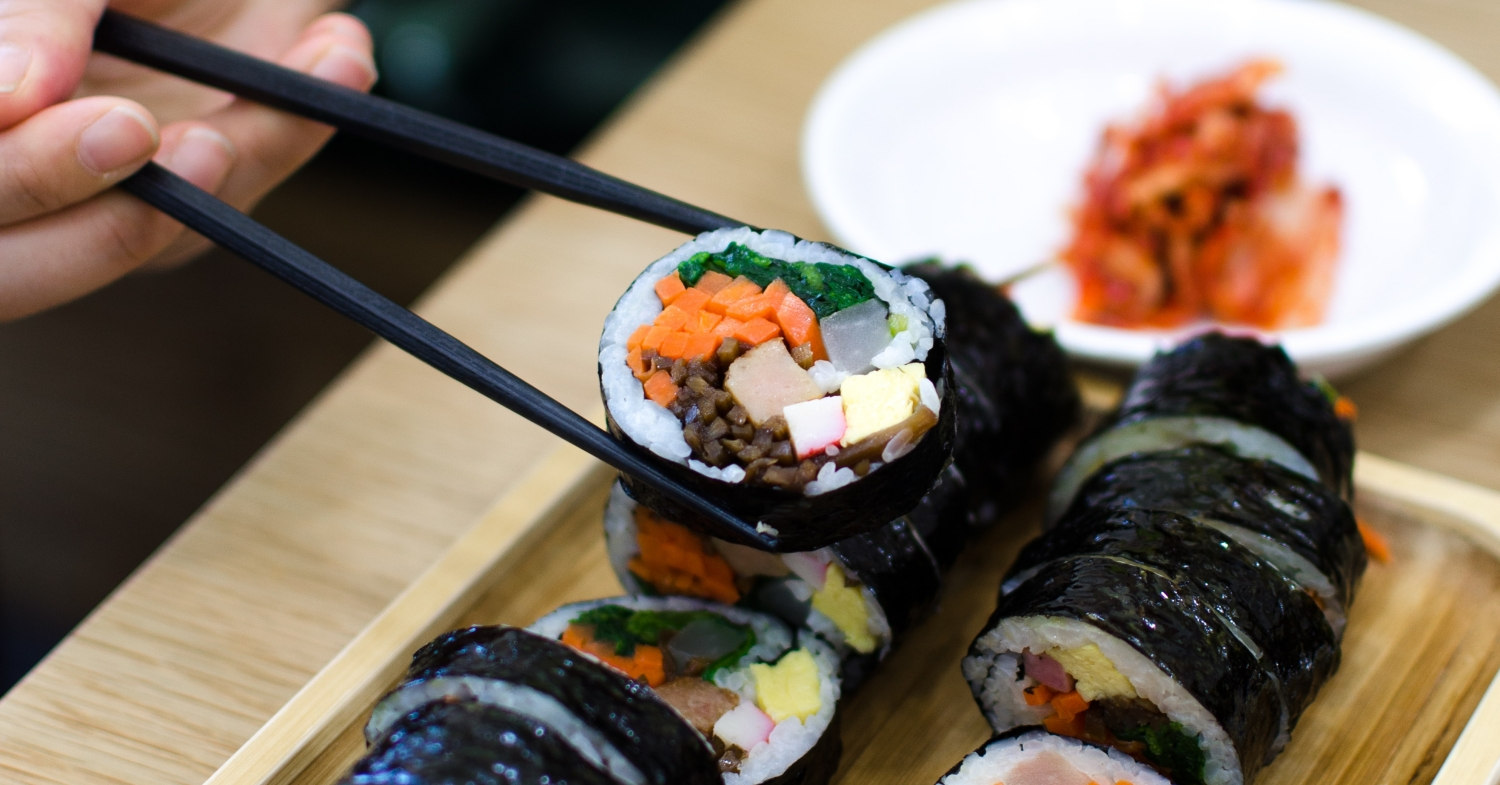
Image adapted from: Filippo Faruffini
Kimbap is a rice roll filled with ingredients such as vegetables, meat, tuna and even cheese. Its origin is debatable as it is unclear whether the Koreans first introduced it to Japan during the Joseon Dynasty, or if the Japanese brought sushi to Korea during the Japanese Occupation.
Nevertheless, kimbap is different from sushi as the rice is mixed with sesame oil, not rice vinegar. Kimbap fillings consist of cooked or preserved food, as opposed to the raw fish commonly found in maki sushi.
As it is cost-effective and does not require much labour and time, selling kimbap was seen as a way for an able-bodied person to get out of poverty. Today, kimbap is enjoyed as a quick snack and is popular as picnic food.
Besides the usual kimbap roll, you also have sam-gak-kimbap, a triangular-shaped kimbap.
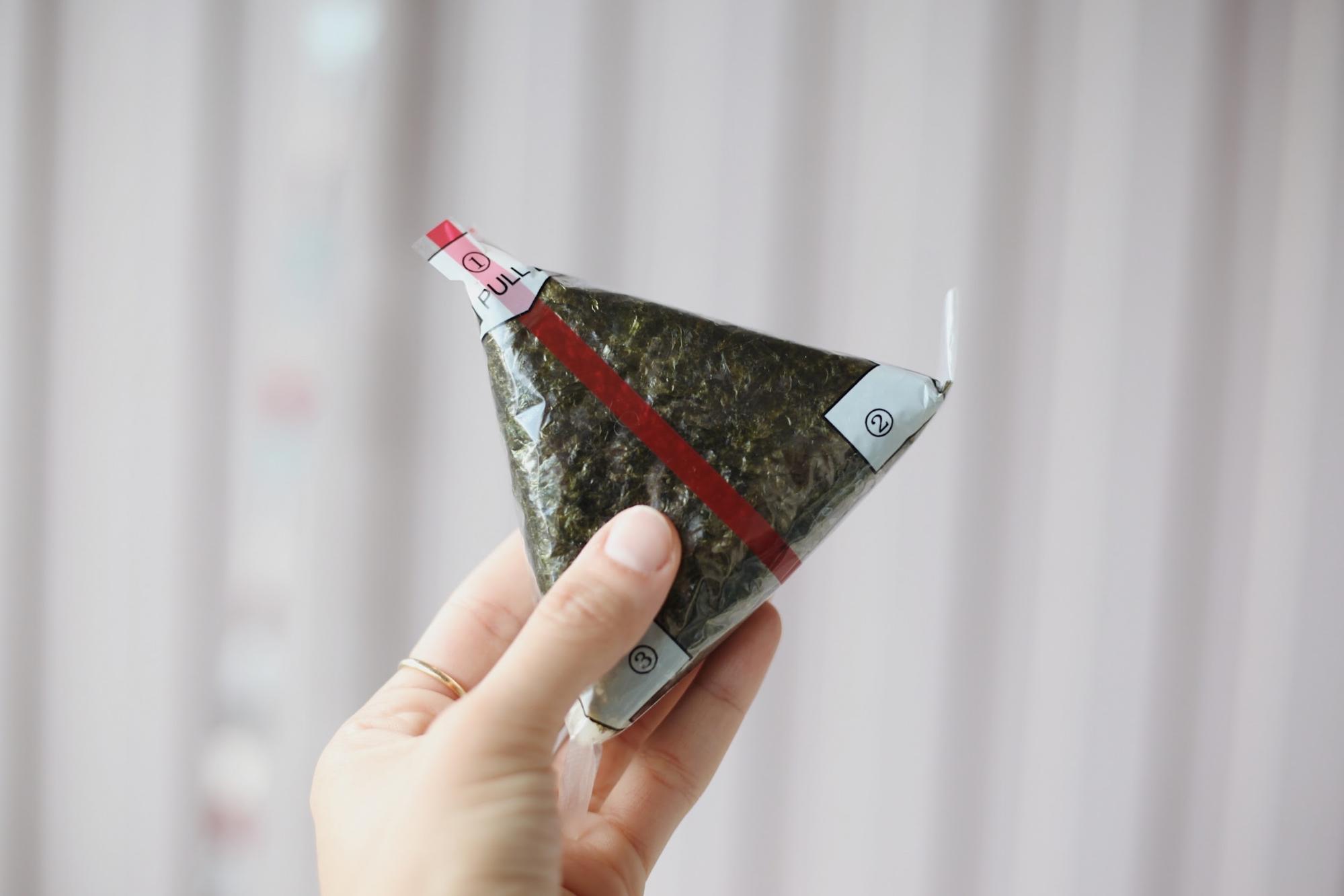
Image adapted from: Samia Liamani
7. Bibimbap 비빔밥 (Mixed rice with vegetables and meat)
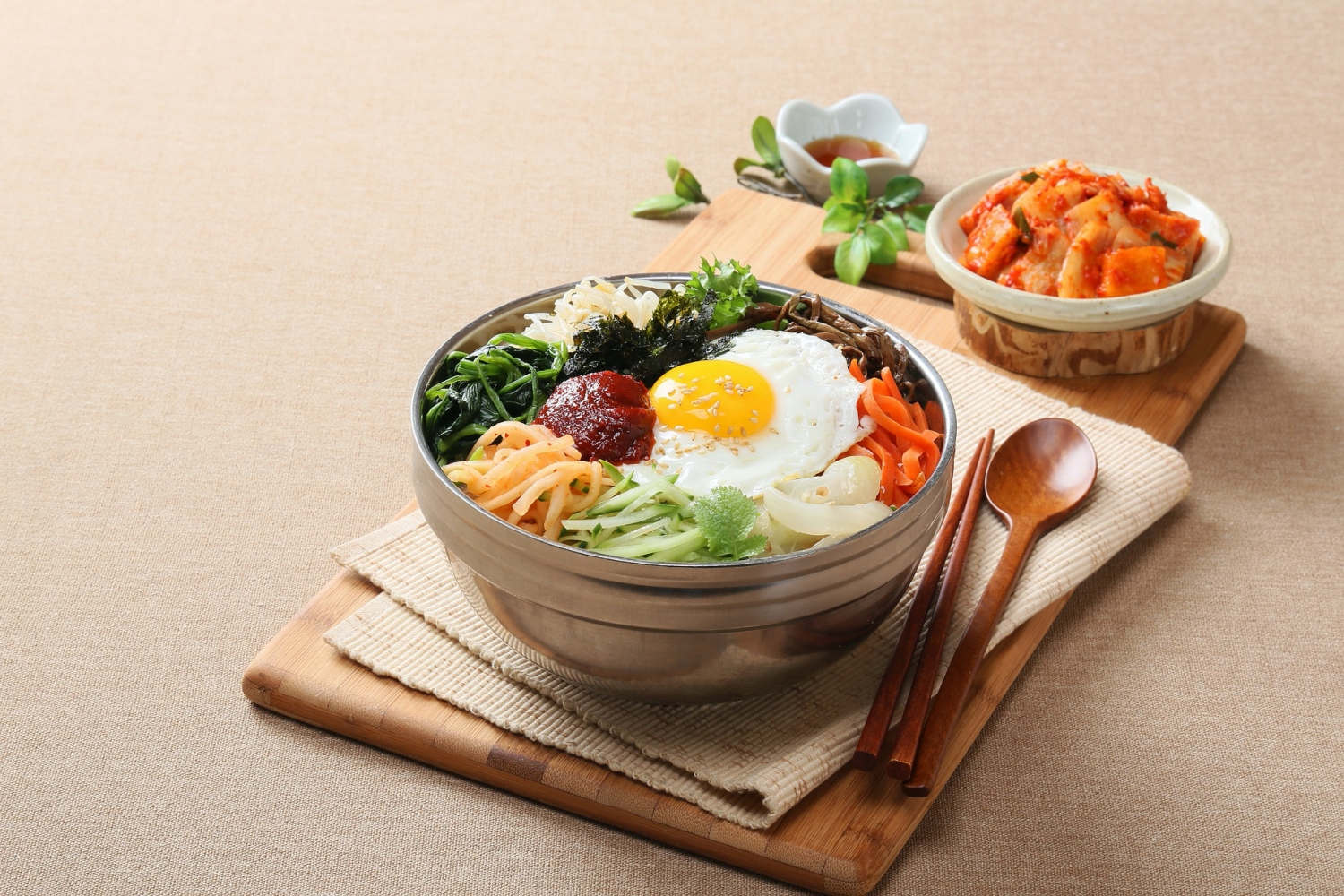
Image adapted from: changupn
Bibimbap was formerly known as “goldongban” (골동반) and “hwaban” (화반), which translate to “rice mixed vigorously” and “flower blooming on top of rice” respectively.
The different colours of bibimbap represent Korea’s belief of obangsaek (오방색): 5 colours – white, black, green, red and yellow – representing the 5 elements of the universe.
Historical sources suggest that bibimbap was created by farmers’ wives with little time to whip up a traditional meal. Mixing vegetables, meat, and rice that were on hand made for a quick and nutritious meal.
In Jeonju, bibimbap was served to government officials and important guests. Today, Jeonju bibimbap is a must-have when you visit. Different regions prepare bibimbap differently, in terms of toppings and sauces. Each region’s bibimbap boasts unique flavours with ingredients found locally.
8. Japchae 잡채 (Korean stir-fried glass noodles)

Image adapted from: @maison_de_daisy
Japchae translates to “a mix of vegetables” and was first served as a gift to the king during Korea’s Joseon Dynasty. Today, it’s served on special occasions such as holidays, weddings, and birthdays.
A sweet and savoury noodle dish, japchae can be eaten as a side or a main dish. It can also be served on top of rice in a dish known as japchae-bap (잡채밥).
Japchae is made by mixing glass noodles, vegetables, and meat, then seasoned with soy sauce and sesame oil. While today’s japchae features glass noodles as the main highlight, the royal version of japchae did not. When japchae was initially presented to the king, it consisted of nothing more than stir-fried vegetables and mushroom.
When glass noodles were introduced from China during the 20th century, it quickly gained popularity and was added to japchae. Now, it is hard to imagine japchae without the chewy texture of glass noodles. Other ingredients, such as beef, have also been added over time to make japchae what it is today.
9. Budaejjigae 부대찌개 (Army stew)
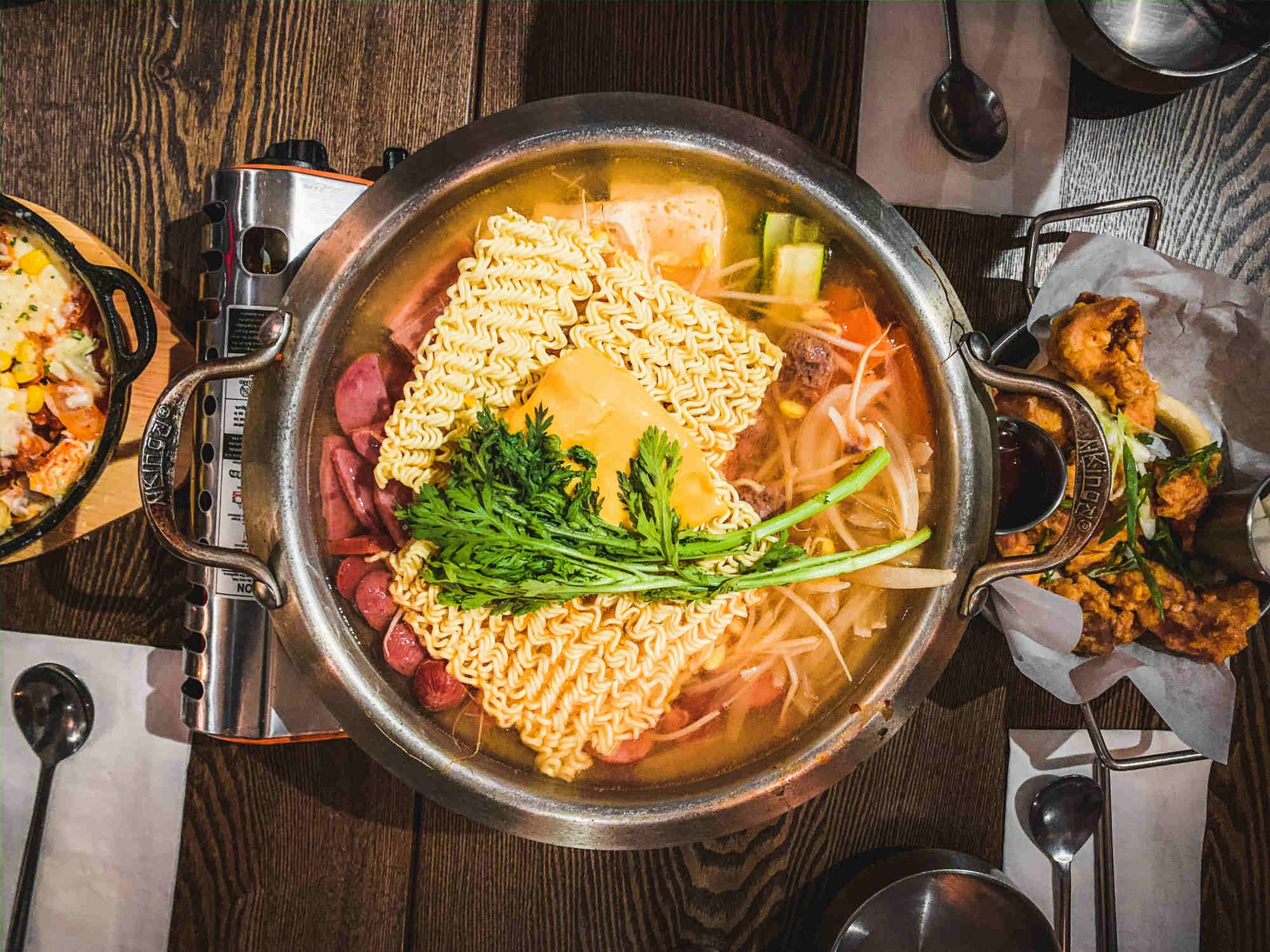
Image credit: Sean Lee
Budaejjigae, also known as “army stew” is a type of Korean hot pot typically consisting of ham, sausage, spam, baked beans, kimchi, and gochujang. It incorporates both North American processed food and local ingredients.
Budaejjigae is testament to the harsh times people endured during the Korean War. As food was scarce, US military bases would sell their leftover processed food to hungry Koreans. It was common to find inedible garbage, such as cigarette butts, in these leftovers.
Koreans would supplement the leftovers with their own ingredients, such as kimchi, gochujang, tofu, and vegetables. After the war, meat continued to be scarce and people would smuggle food rations out from military bases. Budaejjigae was a dish born in adversity and filled the stomachs of many.
Uijeongbu, a city north of Seoul which housed many US military bases during the war, can be considered the birthplace of budaejjigae. One of the main attractions in Uijeongbu is the Budaejjigae Street, where restaurants have been selling army stew since 1998.
Budaejjigae still serves as a painful reminder of war for older Koreans, with some still referring to the dish as “garbage stew”. To the younger Koreans, budaejjigae has become a popular comfort food.
10. Samgyetang 삼계탕 (Ginseng chicken soup)
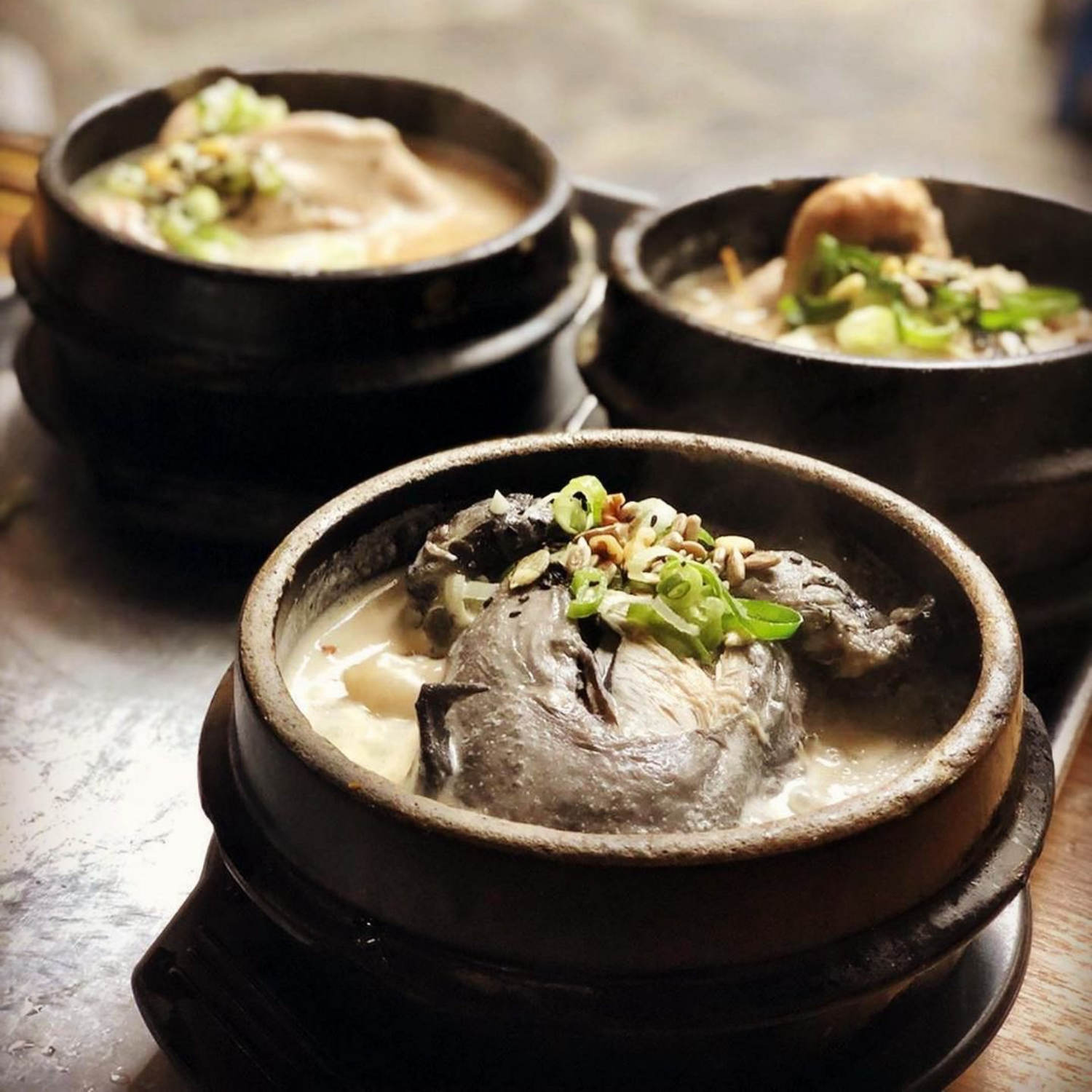
Image adapted from: @mino_0926
Samgyetang is commonly eaten during the summer, despite it being a hot dish. That’s because the soup contains various herbs said to improve blood circulation and combat heat exhaustion.
“Sam” (삼) refers to ginseng (in-sam, 인삼), “gye” (계) translates to “chicken” and “tang” (탕) means soup. It used to be called “gye-sam-tang” (계삼탕) because the main ingredient is chicken, but then people realised that ginseng is more valuable than chicken. Thus, the order was switched around.
Samgyetang is most popular during boknal (복날), the hottest days of summer. Koreans believe that summer heat causes an imbalance between the temperature outside and within the body. This imbalance makes it easier to get sick and lose energy.
Eating samgyetang helps to generate heat within the body as both chicken and ginseng are considered to be “heaty”. According to the Exemplar of Korean Medicine written in 1613, eating chicken helps to control excessive thirst and generates heat within the body, while ginseng replenishes energy.
During the Japanese colonial rule, the rich added ginseng powder to their chicken soup (dak-baek-suk, 닭백숙), and this is said to be the start of samgyetang. Restaurants started selling samgyetang during the late 1940s and it eventually became a celebrated summer dish in Korea.
11. Naengmyeon 냉면 (Cold noodles)
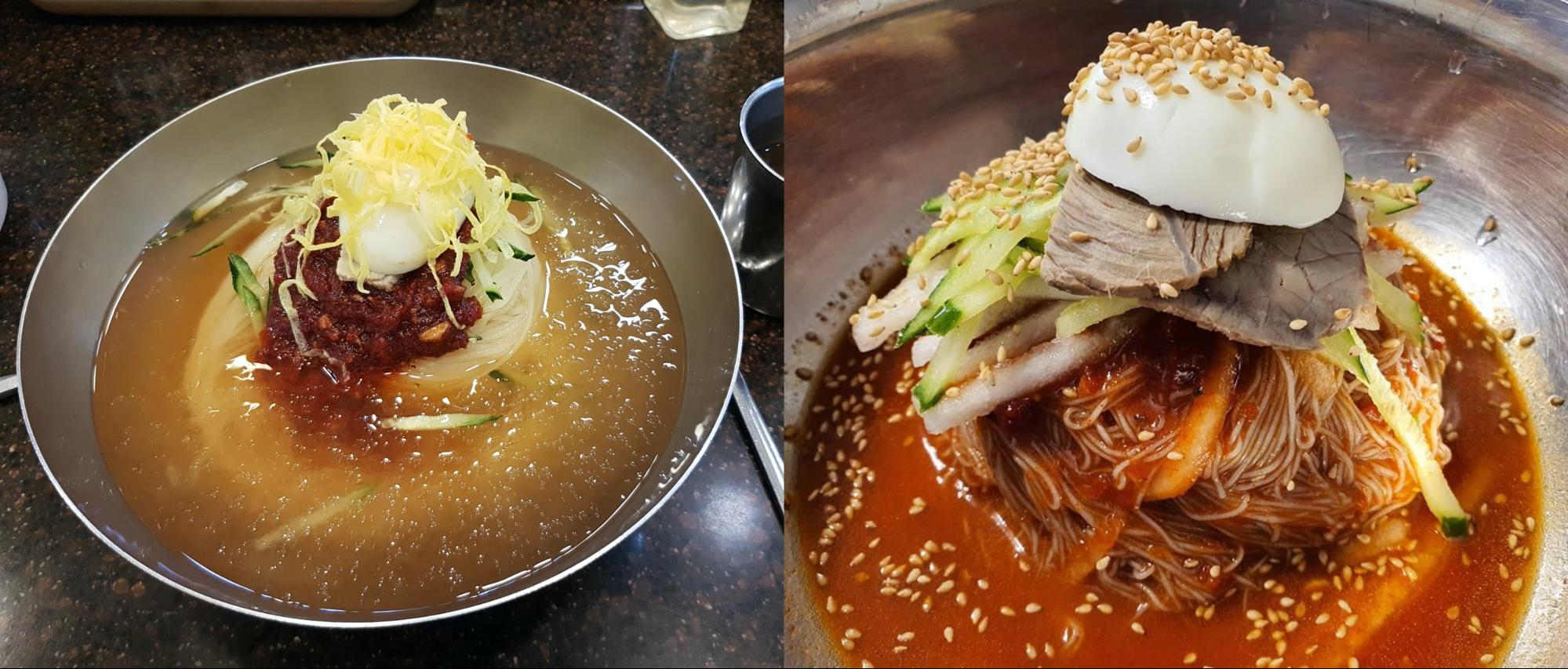
Image adapted from (left to right): Jasmine Kuah and @no.1hoon
Naengmyeon is a cold buckwheat noodle dish usually eaten with cold broth or red pepper sauce and it was first made in the cold northern parts of Korea. It was created not as a dish to beat the summer heat – it was typically eaten during winter.
Buckwheat is usually harvested during autumn and tastes best during winter. As other crops do not grow well during the harsh winter, people turned to using buckwheat in their food.
Moreover, the lack of proper ice storage in the past made it impossible to enjoy naengmyeon during the warmer seasons. When proper ice storage systems were made accessible in the late 19th century, naengmyeon gained popularity as a summer dish.
There are two main types of naengmyeon – mul-naengmyeon (물냉면) and bibim-naengmyeon (비빔냉면).
The “mul” (물) in mul-naengmyeon refers to “water”. The noodles are accompanied with a cold broth made from beef or radish kimchi (dong-chi-mi, 동치미). Vinegar and mustard sauce are served on the side and added according to one’s taste.
On the other hand, “bibim” (비빔) means “to mix”, and bibim-naengmyeon refers to noodles mixed with red, spicy sauce.
Mul-naengmyeon originated in Pyongyang and is sometimes known as Pyongyang naengmyeon (평양냉면), while bibim-naengmyeon started in Hamheung and goes by the name “Hamheung naengmyeon” (함흥냉면). Both Pyongyang and Hamheung are cities in North Korea. After the Korean War, refugees who fled North Korea brought these recipes to the South.
Naengmyeon became a peace symbol when the two Koreas’ leaders, Kim Jong Un and Moon Jae In, were served Pyongyang naengmyeon during the Inter-Korean Summit in 2018. As a popular dish in both the North and South, naengmyeon is seen as the bridge between the two Koreas.
12. Samgyeopsal 삼겹살 (Three-layer pork belly)

Image credit: lpegasu
Samgyeopsal (pork belly) is so popular in Korea that there is a day dedicated to it. The 3rd day of the 3rd month each year is known as Samgyeopsal Day, referencing the distinctive 3 layers of pork bellies.
On this day, many barbeque restaurants and meat shops hold promotions, encouraging customers to eat samgyeopsal.
Samgyeopsal has become such an integral part of Korean barbeque, yet the practice of grilling pork is fairly recent. Historical records dating back to the Joseon Dynasty stated that pork was mostly boiled for soup, not grilled.
After briquettes were made accessible in the 1960s, Koreans started grilling meat over fires. Steel drums were found to be great for grilling meat and even till today, you can still see many barbeque restaurants in Korea with steel drum-shaped tables.
There are different stories on how samgyeopsal gained popularity. One states that in the 1970s, when trade between South Korea and Japan increased, South Korea started exporting pork to Japan. However, pork belly was unpopular due to its high fat content. Faced with an excess of pork belly meat, Koreans turned to it as a cheaper alternative to beef.
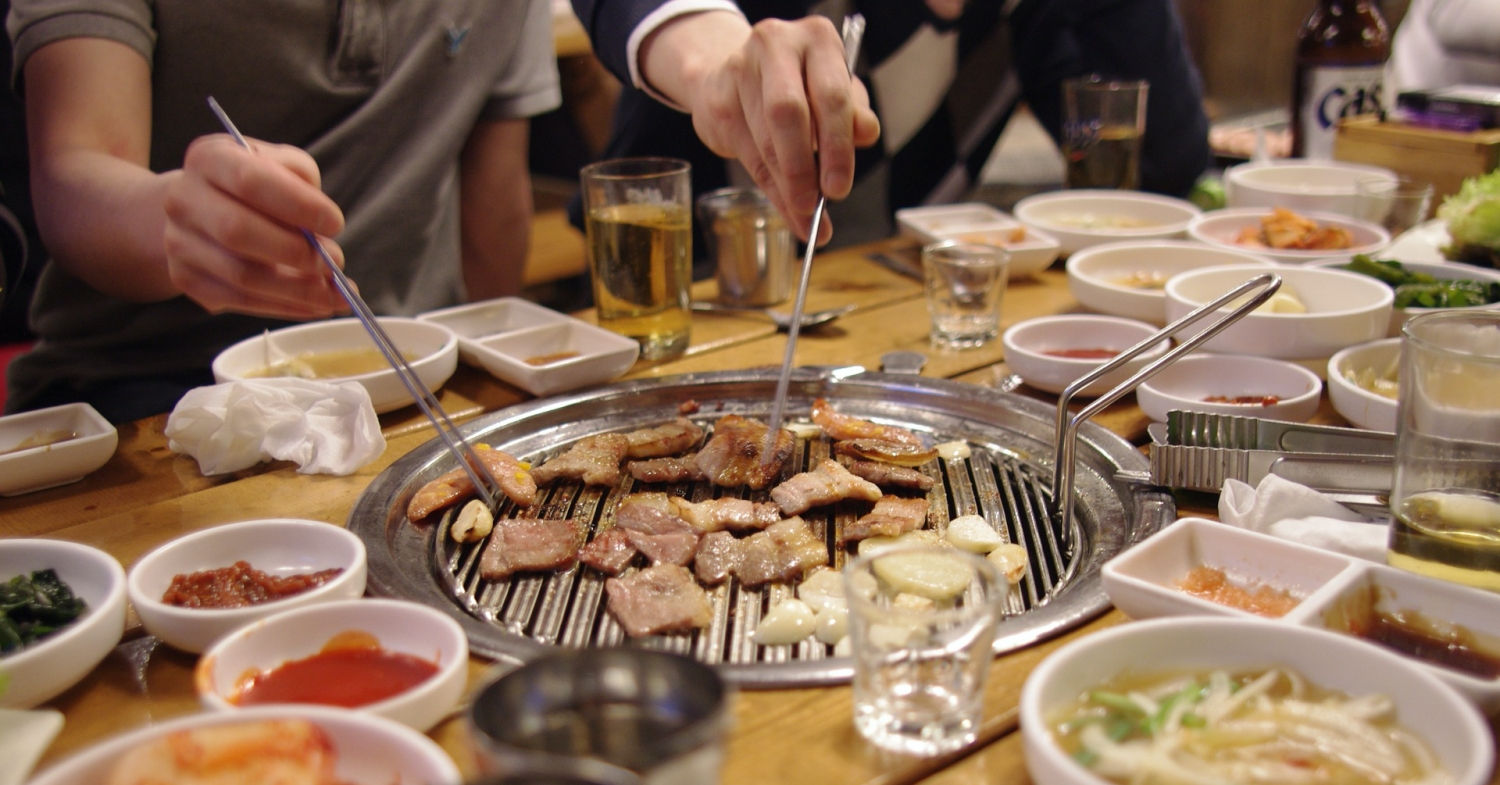
Image adapted from: 2eeeeee
Today, samgyeopsal is often paired with soju. Drinking and eating samgyeopsal has become a social experience – office workers like to relieve stress after a hard day’s work by having barbeque dinners with friends.
While samgyeopsal was cheap 50 years ago, it has become so popular that it’s now one of the most expensive cuts of pork in South Korea.
Stories behind traditional Korean food
Food can reflect a country’s unique history and culture. It is amazing to see how far traditional Korean food has come to be what it is today. The next time you are at a Korean restaurant with your friends, apart from complimenting how delicious the food is, you can also flaunt your knowledge of its history.
Check out other K-culture articles:
- Kakao Friends Xmas collection
- Pepero day aesthetic desserts
- 2nd gen K-pop groups
- 2021 Korean dramas
- Gamcheon Culture Village guide
Cover image adapted from (clockwise from top-left): chengzhu, changupn, jelly, and changupn
